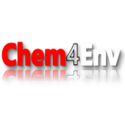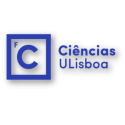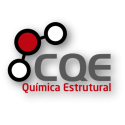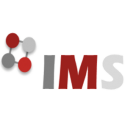Chromatography & Capillary Electrophoresis Lab.
The scientific interests of this research line focus on Analytical Chemistry with prominence to the development, optimization, validation and application of chromatographic (GC and HPLC), electrophoretic (CE) and hyphenated (GC-MS and LC-MS) methods.
For this reason, our research has been involved on the implementation of modern “sample preparation” approaches, in particular novel analytical devices indicated for static microextraction sampling. In the last years, we have developed, optimized and applied most of the common sorption-based technologies, but also proposed new analytical devices and strategies, concepts and ideas to improve the analytical performance essentially for trace level analysis. Recently we introduced the bar adsorptive microextraction (BAµE) technique, which uses nanostructured materials and operates under the floating sampling technology, making this analytical approach ideal for trace analysis of polar compounds.
Our research projects fall upon environment, food, phytochemistry, forensic, industry, etc. As examples of the application of the developed methodologies, studies to monitor organic micropollutants in drinking, surface, ground and waste water samples can be highlighted, as well as in sediments from national estuaries (e.g. endocrine disrupters, pesticides, organotins, etc.), to chemically characterize compounds coming from samples of wine, fruits and natural products (e.g. volatiles, aroma, polyphenols, essential oils, etc.), and from industrial by-products (e.g. crude Tall-Oil).
From the research performed, we can find several interesting achievements regarding the importance of our research in the community at large. In the analytical point of view, our approaches have showed great performance when compared with other dedicated conventional methodologies, since proved to be feasible alternatives for routine analysis, easy to implement, and to monitor many compounds with concern in complex matrices. The methodologies developed by this research line use new technologies, including devices having a suitable configuration design and novel coating phases with convenient sorptive properties that have shown great selectivity and sensitivity for trace analysis. Furthermore, the analytical strategies proposed are, in general, environmentally friendly methodologies based on “green chemistry”, since most of them are solventless procedures, without using toxic organic solvents, being in compliance with the recommendations set by the main international environmental Agencies.
The results obtained from our research are published on a regular basis in various peer reviewed journals, as well as presented in several national and international conferences and seminars. Patents have also been submitted.
Hydrometallurgical Separations Lab.
The research of this lab has been mainly focused on the systematic study of the influence caused by the composition and structure of suitable organic compounds on the extraction of metal ions, in order to optimize the extractive efficiency of the organic solvents, as well as their selectivity. Stripping of the loaded solvents to allow the recovery of each metal ion to a new aqueous solution is also an important aim to be achieved in these studies. The extractants investigated may come from commercial sources, but the synthesis of specific organic compounds to be used as extractants is usually carried out.
The scientific interests of this lab have originally been focused on the concentration and/or purification of leaching solutions coming from the hydrometallurgical treatment of minerals or metal concentrates by solvent extraction. Those studies have been particularly devoted to the recovery of silver(I), indium(III) and iron(III). Recycling of metallurgical residues – galvanic sludge obtained from the processing of brass through a chromium-nickel treatment -, to recover zinc and nickel, has also been accomplished by solvent extraction approaches developed in this lab.
Nowadays, the recovery of platinum-group metals (PGMs) – platinum(IV), palladium(II) and rhodium(III) – from simulated and real leaching solutions, by solvent extraction, is the main area of research of the lab.
PGMs are very valuable and considered critical raw materials, since they are scarce in the Earth’s crust, hardly replaceable in most applications, and have high supply risks associated. Due to those facts, the recycling of PGMs has become mandatory not only for technical and economic reasons but also for the preservation of their natural resources. Accordingly, our research efforts have been focused on the development of new hydrometallurgical process schemes for an efficient and selective recovery of PGMs from secondary raw materials, such as spent industrial and/or automobile catalytic converters.
Typical commercial liquid-liquid extractants for PGMs contain phosphorus atoms. New environmentally-friendly extractants, i.e. without phosphorus atoms, namely a few N,N’-tetrasubstituted malonamides, and some tetrasubstituted N,N’-thiodiglycolamides and N,N-disubstituted thioamides were synthesized and fully characterized. Some of these compounds showed excellent potential to efficiently recover platinum(IV) and/or palladium(II), through liquid-liquid extraction, from concentrated chloride media. Additionally, the mutual separation of the two PGMs has also been accomplished, as well as their selective isolation from contaminating base metals in the leaches, such as iron(III) and aluminum(III). Full process schemes, aiming at the direct application of the most promising liquid-liquid extraction systems to real leaching solutions (from the hydrometallurgical treatment of spent automobile catalytic converters), are now under development. It is also intended to extend this research to the recycling of spent industrial catalysts. The leaching of these secondary raw materials is accomplished with the collaboration of Doctor Carlos Nogueira, from Laboratório Nacional de Energia e Geologia (LNEG).
The study of the interfacial properties exhibited by specific liquid-liquid extraction systems, involving some new extractant derivatives and chloride aqueous solutions, is also carried out when justified. This investigation is conducted with the collaboration of Doctor Maria da Soledade Santos, from the Structure and Reactivity group of CQB.
Finally, it is worth mentioning that the developed research carried out by this lab is published on a regular basis in various peer reviewed journals of the area (e.g., Solvent Extraction and Ion Exchange, Separation Science and Technology, Hydrometallurgy, etc.). The attendance of members of the lab to national and international conferences is also frequent; for instance, the International Solvent Extraction Conference (ISEC), conducted every three years, is a trademark of the researchers and industrials working in the solvent extraction area, accompanied by the publication of papers in its highly renowned proceedings.





